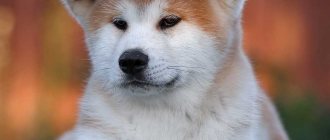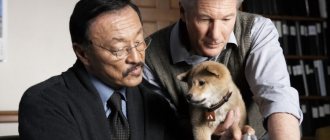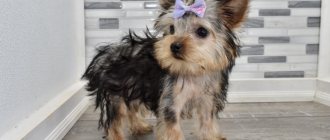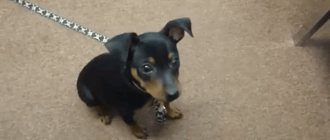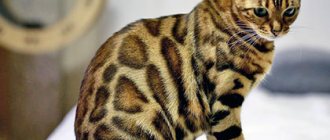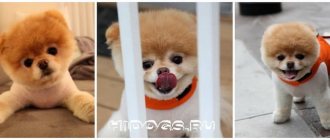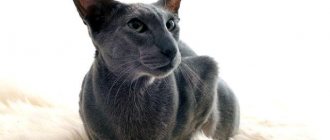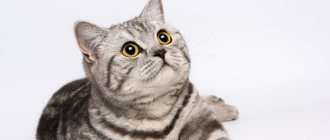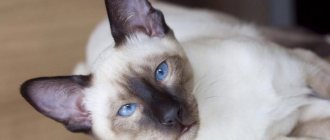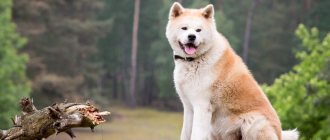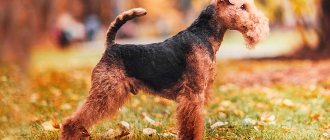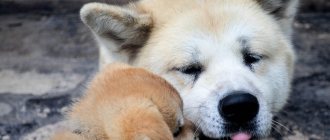Many people would like to have an Akita Inu pet, but their living conditions do not allow them to keep a dog of such a large size. However, there is a way out: after all, there is a breed of dog in the world that looks almost the same as the Akita Inu, but is about half its size.
This mini version of the Akita is suitable for apartment living and is easier to feed and train. However, she has some breed characteristics that need to be taken into account by those who are planning to purchase her.
Care and maintenance
The sleeping place for a puppy and an adult dog is arranged not on the move, not in a draft, not near a radiator and away from bright directional light.
Shiba puppies are clean, they just need help with this. It is necessary to allocate a place for the toilet away from his bed. After the course of vaccinations, take the puppy outside every 3-4 hours. You should not go for a walk immediately after eating - active movements with a full stomach are also harmful for an adult dog.
The health of the coat will be maintained by weekly brushing. Twice a year both the outer coat and the undercoat shed - then they do not pluck it, but comb it out.
The dog, washed with neutral shampoo, is blotted with a towel and dried with a hairdryer. Ears, claws, and teeth require regular examination.
The Shiba Inu is not picky when it comes to nutrition, but the diet must be composed correctly. It is worth listening to the experience of the breeder and the advice of the veterinarian, do not feed “from the table”, and follow the established feeding regime.
Shiba should always be able to move. Walk a lot, and play at home.
How to care
Caring for a miniature Akita is not difficult. In normal times, it is enough to comb it once a week; during shedding, the number of combings should be increased to 3-4 times a week. It is not recommended to cut your dog's hair. Akita is very clean, she will try to get around the dirt on the street, you can bathe her no more than 2-3 times a year. After drying, the dirt is brushed out with a brush.
The dog is well adapted to winter, easily tolerates low temperatures, and is suitable for keeping in an enclosure with an insulated booth. She should have her own permanent place in the apartment. It should not be in a draft or near heating systems. You need to walk your pet 2 times a day; it is advisable to let the dog run freely in a fenced area.
Keeping at home
The Shiba Inu is more suitable for keeping at home due to its small size, but at the same time, it needs to be constantly dealt with and taught norms of behavior.
A stubborn disposition can only be broken at a young age. Caring for a Shiba Inu puppy will not create any big problems.
It is important to choose the right resting place for your pet. It should not be in a draft or near heating equipment.
A special bed lined with thick fabric made from natural materials is perfect for these purposes.
Shiba Inus prefer peace and quiet, but at the same time want to be aware of all events.
It is best to choose a place for a bell guard in the corridor, where there is a view of the rest of the rooms. To prevent your puppy from damaging shoes, furniture, books and other items, you should purchase rubber toys for him in advance. Array
Education and subtleties of training
Despite the apparent cuteness, training representatives of the Akita Inu breed is fraught with certain difficulties.
An inexperienced dog handler will most likely not be able to cope with an intelligent, cunning pet. In addition, dogs are very touchy and vindictive, so physical violence in dealing with them is unacceptable. They will remember this for the rest of their lives, and at any opportunity they will try to take revenge on the offender. You need to influence with voice intonations and stern looks. Akita Inu are subtle psychologists and are quite capable of perceiving such subtleties of communication.
You need to act very carefully and with restraint. This breed is suitable only for people with a strong character and self-control. It is better for a nervous person with an unstable psyche to refuse to buy such a puppy.
You need to start raising your baby as soon as he adapts to life in a new home. First of all, you should “explain” to the wayward pet that the owner is a leader. At the same time, the “Japanese” should feel that here he is under the protection of loving people who will never offend him. Dogs have highly developed protective and hunting instincts, so the pet must understand that there is no need to defend itself. Otherwise, the house will turn into a constant battlefield for dominance.
Monotonous classes with duplication of the same commands are not suitable for this breed. Training should take place in the form of a game and be varied. Then kids will learn skills with pleasure and quickly. Their intelligence is very developed, the main thing is to interest the animal.
Early socialization is of great importance for Akita Inu. Communication from an early age with strangers and other dogs will teach the dog to respond adequately to society and reduce the degree of wariness and anxiety. Breeders note that males react more sharply to their relatives, and females - to strangers.
Diseases of the breed
We hasten to inform you that there are no breed diseases in Akita Inu, as such. They have, of course, a certain predisposition to specific ailments, however, these diseases are not observed in all representatives of this breed. So, we are talking about:
- deformities of the pelvic joints of the thigh;
- disorders of the thyroid gland;
- deformation of the kneecaps;
- hearing impairment;
- disruption of vision at night.
There are no breed diseases in Akita Inu.
As we have already said, the listed diseases will not necessarily affect your pet, because this breed is considered one of the strongest and longest living. However, if you waste money or time and refuse to carry out the necessary veterinary procedures, your Akita Inu will get sick and suffer just as much as a regular mongrel dog. This is about:
- timely vaccination against rabies, leptospirosis, canine distemper and other diseases, carried out once a year;
- carrying out antihelminthic therapy every six months;
- treatments for ticks and fleas (as needed);
- treatment of other ailments arising under the influence of external factors.
Responsibility for your pet's health lies with you
Provided that you undergo all the preventive procedures listed above and treat him in a timely manner for minor ailments, your dog will not require serious medical intervention and will delight its owner with activity and love for decades.
Dog care
If you have the desire and opportunity to have an Akita Inu, then you don’t need to worry about keeping it - these pets are very unpretentious. They can live perfectly well on the street (the thick undercoat is designed for this), and are quite suitable for living in an apartment. If a dog is purchased for street life, then it is necessary to provide it with an insulated kennel for the winter.
It is worth taking into account the activity of the dogs, since it is necessary to walk the Akita for a long time - twice a day for 2 hours, at least. Otherwise, the animal will find something more interesting to do, and this does not bode well for the owner.
When walking, dogs behave in a disciplined manner and rarely enter into conflicts. But they can frolic with their own kind.
It is worth taking care that the dog does not gain excess weight. And for this you need a balanced diet and proper physical activity.
The Akita's coat does not require special care. It is enough to brush your pet 1-2 days a week, while simultaneously ridding it of tangles. But during seasonal shedding, the dog will need to be brushed almost every day. This will allow the coat to renew itself faster. During this period, you can give the animal complex vitamin supplements.
Representatives of this breed should not be bathed frequently, as frequent bathing can provoke the development of various diseases. It is quite enough to carry out the procedure once every 4-6 months. It is necessary to use special detergents, and after washing the wool must be dried.
Feeding your pet should also not raise any questions, since there are no particular difficulties here. Like other pets, it is not recommended to feed the Akita Ana with food from your table.
Modern dog breeders prefer to feed their pet dry food, sometimes supplementing the diet with fermented milk products, lean meat, vegetables and broth. The pet should be provided with free access to drinking water.
Beauty and health of a small Akita
Every person who decides to have a pet of this breed should know its strengths and weaknesses in order to protect the dog from a number of diseases and provide it with proper care.
Dog health
Representatives of this breed have excellent immunity and rarely suffer from colds. However, there is a tendency to a number of diseases that can be transmitted along the genetic line:
- dysplasia of articular tissues;
- allergies;
- dislocated patella;
- spontaneous bleeding;
- eye diseases;
- hypothyroidism.
Important! With quality care, a pet's life expectancy is up to 15 years.
A miniature pet will become a real friend for young children
Dog care
When keeping a four-legged pet in an apartment, it must be walked at least 2 times a day. For walks, you need to choose new places, since the monotonous environment will quickly get boring. The walk should be active, so it is best to take a ball or any other toy with you. If your pet lives in an area adjacent to a private home, you should take care of its safety. Because Akita Inu or Shiba Inu loves to dig under the fence.
The dog should be taught hygiene procedures from an early age. The set of standard procedures includes:
- Cleaning teeth, ears and eyes.
- The washing up. It is necessary to bathe your pet no more than once every six months, and after bathing procedures you can take it outside only after 8 hours.
- Combing wool.
Important! Representatives of the Akita Inu and Shiba Inu breeds are prohibited from having their hair cut, as this is contrary to Japanese traditions.
Regular grooming will allow your pet to always be neat and have a shiny coat.
Nutrition and diet
You need to feed your pet after a walk, choosing one of the options:
- Dry food. For puppies it needs to be soaked in water.
- Natural balanced food.
The frequency of feeding depends on the age of the dog. Mini Akita Inu should be fed based on age indicators:
- Akita Inu puppies up to 2 months of age are fed 5-6 times a day.
- At 2–6 months they are fed 3-4 times a day.
- At 6–8 months – 2-3 times a day.
- At the age of over 8 months, the pet is transferred to an adult diet and fed 2 times a day.
What to feed your Shiba Inu
If with dry food everything is simple, you just need to choose an age-appropriate super-premium or holistic class option, then with natural food the issue is more complicated. So, Akita Inu can be fed with the following foods:
- rabbit, beef, duck;
- offal;
- fish without bones, but only sea fish;
- quail eggs;
- cereals (rice, millet, buckwheat);
- vegetable oil (no more than 1 tsp);
- vegetables and fruits in season.
Important! It is strictly forbidden to feed your dog grapes and raisins.
It is important that the Akita has a properly structured diet
Suitable nicknames
For boys you can choose:
- Abaris, Abdul, Abiz, Aden, Adonis, Alf, Ador, Alamo, Amber, Arnold, Alvaro, Iron, Agate, Akari, Aramis, Arden;
- Barney, Bilbo, Brian, Bruce, Bregon, Black, Byron, Benjamin (Ben), Brutus, Boyar;
- Dakar, Danny, Dustin, Dexter, Dandy, Draco, Dingo (Dean), Dollar, Don;
- Maestro, Martin, Max, Mickey (Mick), Merlin, Morgan, Maurice, Misha;
- Parsifal (Parsi), Pedro, Pluto, Poseidon, Pinko;
- Ralph, Ramon, Ram, Ringo, Rubin, Rafael (Raph);
- Hachiko.
For girls:
- Adelaide, Aika, Albina, Alma, Allegra, Annabelle, Andromeda, Akanawa, Ariel, Astra, Arista, Azalea, Alaska, Alexis, Aretha, Arina, Assyria, Aurora;
- Olympia, Ohana, Ocher, Opia, Okima;
- Salma, Samira, Sati, Savannah, Sierra, Cynthia, Santa, Suliko;
- Esmeralda, Estima, Aetola, Erinia, Evernia.
Characteristic
Akita Inu is a companion dog of a discreet nature, in the FCI classification it belongs to Spitz and related primitive breeds. There are no performance tests for dogs.
Breed standard FCI No. 255
Akita Inu is a balanced dog, quite large and noble in appearance. He behaves with restraint and obedience, without aggression.
Head size in proportion to the dog's body. The frontal part is wide, without folds. There is a pronounced groove on the Akita's forehead, and a stop line is also noticeable. The muzzle is of moderate length - the base is wide, slightly tapering towards the black lobe. Partial depigmentation of the lobe is acceptable for light-colored dogs. The teeth are moderate, even, covered with dense lips - a scissor bite.
At the level of the stop, the eyes are almost triangular in shape. The outer corners are raised relative to the inner ones. Eye color is dark brown. The erect ears are set moderately wide at the top of the skull and covered with a layer of dense, soft hair. Slightly inclined towards the muzzle.
The neck is thick, without dewlap, covered with a voluminous collar, flowing into the line of a strong back. The chest is deep, the ribs are slightly curved, the belly line rises up from the chest to the groin area. The croup is completed by a thick tail set high. It is twisted into a ring and thrown as far as possible onto the back.
The paws are thick and strong, the toes are arched, gathered into a dense ball. The elbows of the forelimbs are tightly pressed to the body, the hock joints of the hind limbs are developed, due to which the dog moves elastically and quickly.
Other deviations leading to disqualification:
- snack, undershot;
- incomplete dental formula;
- short tail;
- aggressiveness, timidity;
- blue or black spots on the tongue;
- excessively long hair;
- drooping ears;
- black mask on the face;
- spots with white color.
Dimensions, weight and height of the breed
The permissible weight for Akitas is not specified in the standard - breed experts focus on the proportionality of the animals. The height for males should be up to 67 cm, for females - up to 61 cm, while the body proportions are as follows - the height is 10/11 of the length of the body.
Breeders note that the weight of males reaches 59-65 kg, females - 32-45 kg.
Possible colors
The Akita Inu has a straight coat - the guard hair is coarse, and the undercoat is soft and downy. The length of the coat is medium, slightly higher on the tail, withers and rump area.
Types of colors allowed for Akita Inu:
- white;
- brindle;
- red-fawn;
- sesame is an analogue of red-fawn, with dark ends of hair.
With all types of color, representatives of the breed have whitish hairs on the face - in the area of the cheekbones, lips and lower jaw. There are also such hairs on the body - they are called “urajiro”.
Puppy weight by month
Weight differences between Akita Inu females and males appear from childhood. The owner must monitor the development of the puppy and, if necessary, adjust the diet.
Weight-to-height ratio for Akita females:
- 1 month – 2.7 kg;
- 2 months – 5 kg;
- 3 months – 9.5 kg;
- 4 months – 12.5 kg;
- 5 months – 15.5 kg;
- 6 months – 17.5 kg;
- 7 months – 19 kg;
- 8 months – 20 kg;
- 9 months – 21.5 kg;
- 10 months – 21.5 kg;
- 11 months – 22 kg;
- 12 months – 25 kg.
Weight-height ratio for male Akita Inu:
- 1 month – 2.7 kg;
- 2 months – 7.5 kg;
- 3 months – 15 kg;
- 4 months – 20 kg;
- 5 months – 25 kg;
- 6 months – 30 kg;
- 7 months – 32.5 kg;
- 8 months – 35 kg;
- 9 months – 36 kg;
- 10 months – 37 kg;
- 11 months – 37.5 kg;
- 12 months – 38 kg.
Indicators are approximate and vary depending on the physical parameters of the puppy’s parents.
Lifespan
Akita Inus live 10-12 years, which is slightly less than the average for large breeds. Experts say that the war contributed to the reduction in life expectancy - before it, Akitas lived 14-15 years. Today, females live longer than males by 2-6 months.
Allergenicity
Akita Inu has a pronounced seasonal shedding, and the undercoat collects dust. It is believed that the dog is not suitable for allergy sufferers - there are known cases when representatives of the breed caused allergies. To make sure there is no negative immune reaction to the undercoat or guard hair, it is recommended to take allergy tests.
Appearance, standard and photo
The Shiba is a relatively small dog with a proportional, harmonious and moderately muscular build . The ratio between height at the withers and body length is 100:110 in males; in females the body format is somewhat more elongated.
The head is of a size commensurate with the body, with a wide skull, a clearly defined transition to a muzzle slightly tapering towards the end. The cheekbones are well defined, and there is a small longitudinal groove on the forehead. The eyes are slightly slanted, small, triangular in shape, their color is one of the shades of dark brown.
The ears are erect, medium-sized, triangular, turned forward. The nose is black. The neck is strong and quite muscular. The back is strong and straight. The stomach is tucked, but not excessively. The tail is set high, curled into a ring on the back.
The limbs are smooth and parallel, moderately muscular and quite strong . The paws are arched, tightly compressed, with elastic and durable pads and dark claws. The coat is very dense and thick, the so-called “wild” type: it consists of a straight and fairly rigid spine and a soft, dense undercoat.
Desirable colors: red, sesame, red sesame, red sesame, black and tan. Sand and white are acceptable, but not desirable.
NOTE!
Sesame color is one of the varieties of zonal color, in which the upper part of the hairs is blackened by no more than 50%.
For any color, “urazhiro” is required - lightening of the fur on the sides of the muzzle, cheekbones, neck, chest, belly, limbs and lower part of the tail.
Next you will see how representatives of this breed look in the photo:
Interesting Facts
Some interesting facts about the American Akita dog breed:
- The history of the ancestors of the breed, Akita Inu dogs, goes back more than 4 thousand years. They are considered one of the 14 oldest dog breeds in the world.
- The writer Helen Keller is considered the first owner of such a dog on the continent.
- In the USA, more than a hundred representatives of the American Akita breed are registered as therapy dogs, and some individuals are even awarded the title “Therapy Dog”.
- In 2009, a film was made about the faithful Hachiko (Akita Inu) starring Richard Gere.
In Russia, a fan of the Akita (Japanese) is the singer Natalya Chistyakova-Ionova, known under the pseudonym Glucose. V.V. Putin has a dog of the same breed.
Brief history of origin
The Akita dog breed is one of the oldest known to man. Mentions of it and drawings date back to the second century BC. In Japan, the breed was declared a national treasure. Clubs have been organized whose activities are aimed at preserving these ancient dogs. They developed rules for keeping Akita Inu, instructions for training and breeding, and prescribed standard parameters. Officially, this breed began to be mentioned in Japan in 1928, and received international recognition in 1964.
Heritage of Japan - Akita
What to feed your Shiba Inu
An adult Shiba Inu dog is fed 2 times a day. Babies from two months of age should be fed 5 times a day, gradually reducing the number of feedings as they grow older. The diet should be balanced, consisting of 18-20% fats and 20-30% proteins. The diet should include sea fish, raw, frozen and scalded meat, and rice is best for porridges.
You cannot feed your pet:
- cabbage;
- sweets;
- legumes;
- citrus fruits;
- grapes;
- pickled, smoked products;
- spiced products;
- sausages, sausages, cheeses;
- fatty meats;
- rich pastries.
Note! When preparing your pet’s diet, do not forget about the tendency of this breed to be allergic to many foods.
A new product must be introduced carefully, in small portions
Differences from Akita Inu
Both breeds are Asian Spitz dogs. Therefore, they are very similar both in appearance and character. Probably the most obvious differences between the Shiba Inu and the Akita Inu are in size. The Shiba's build is smaller than that of the Akita. Compare for yourself:
- standard height for male Shiba Inu is 40 cm, Akita Inu is 70 cm;
- The standard weight of male Shiba Inu is no more than 14 kg, and that of Akita Inu is no less than 35 kg.
There are also differences in character. Shiba Inus are playful by nature, active and easy-going with other family members. Akita, on the contrary, prefers independence, behaves calmly and respectably, and does not like being pestered. Therefore, for an apartment, for families with small children, Shiba is more suitable, and for older people - Akita.
Pros and cons of the breed
Among the advantages of the Shiba Inu are:
- the dog is cheerful, cheerful, smart, hardy;
- instincts are well developed;
- easy to train;
- clean;
- a devoted friend with good security qualities.
The disadvantages include:
- stubborn character;
- excessive combing of dying fur during the molting period;
- due to a tendency to allergies, needs special nutrition;
- does not like loneliness, needs physical activity.
Cheerful cheerful pet
What to do if the parameters lag behind the norm
After a puppy has been taken to a new home and taken away from its usual environment and mother's milk, its growth may slow down.
To prevent this from happening, puppies can be given calcined cottage cheese along with a small amount of whey, one yolk and two drops of multivitamins.
IMPORTANT! In a month, a healthy puppy doubles in size.
Worms may be the cause of stunted growth and weight gain. The first anthelmintic is given before the first vaccination at two months. The necessary drug must be prescribed by a veterinarian.
If the lag in the pet's height and weight is very noticeable in comparison with its relatives, the same puppies, you should pay attention to vitamin supplements. The veterinarian will tell you which vitamin complexes to choose.
Akita Inu dogs are leisurely. They take a long time to grow and are in no hurry to mature. The Akita reaches full physical development only at three years of age.
Character and behavior
Many breeders and owners speak extremely positively about this breed, noting that Akita Inu simply does not have negative aspects of character. Let's take a closer look at whether this is actually true, and also look into the behavioral characteristics of dogs of this breed.
Indeed, it is believed that the Akita Inu is endowed with all the best qualities inherent in other dog breeds, but there are still several negative aspects, but we will talk about them later.
The character of this dog in puppyhood, although distinguished by mischief and playfulness, is still quite calm and balanced. Akita Inu is not characterized by outbursts of aggressive behavior, anger or sudden mood swings; such manifestations can only be caused by the occurrence of dangerous situations that threaten its life or the life of its owner.
But even in such cases, the dog will restrain himself and remain calm until the last moment. The sharp mind of this animal allows it to fully assess the situation and only when there is an urgent need to take appropriate action.
Among the negative aspects of character inherent in this breed, excessive curiosity is noted. The animal will react to any rustle and slightest movements and explore various objects, holes, crevices and much more with curiosity.
Dogs of this breed get along well with people, so they can become a true friend for a single owner or a favorite for a whole family. The animal gets along well with children, so you don’t have to worry about leaving your child with the dog - not only will it not offend him, but she will also play and sometimes even look after him.
Looking at the calmness and balance of the animal, one may get the false impression that the dog is exclusively independent and overly self-confident. This is not so, because with longer contact and a trusting relationship between the animal and the owner, the Akita Inu reveals itself as a gentle, vulnerable, friendly, very sensitive and sincere creature.
This should be taken into account when training, since too rough handling can negatively affect the character of the animal.
Despite all the external independence, a good attitude is very important for a dog of this breed, and, as a rule, she always reciprocates it
As for relationships with other animals, everything is much more complicated here. Since the Akita Inu is very sensitive and jealous of its territory, the dog will in every possible way protect and protect it from the encroachments of other four-legged animals, showing outright hostility towards them.
Intelligence
Akita Inu is distinguished by its keen intelligence and observation. They are able to remember the habits, intonations, facial expressions of the owners, and try to follow the established routine. Breeders claim that these dogs contain eastern wisdom accumulated over thousands of years.
The “smiling” dog is not without cunning. She will try to distract her owner with all sorts of tricks if she does not want to complete the task given to her. You can cope with a quirky pet only by showing strength of character.
Attitude towards children
Adult Akita Inus are not very playful, but they are very responsible. Therefore, they are unlikely to be suitable as a companion for a teenager or preschooler. Proud Japanese women will not want to spend all day running around getting fetched. They will not tolerate rude treatment of themselves. An Akita Inu will not show aggression towards a child; it will simply hide from him.
But for children of primary school age, such a pet will become a real protector. The desire to fight to the death for their family, inherent in their genes, has made selfless dogs excellent “nannies”, under whose supervision you can safely leave a child.
Feeding
To keep your pet healthy and active, you need to choose the right, balanced diet and strictly adhere to it. For example, if you feed your dog dry food, veterinarians do not recommend pampering the animal with food from your table, or, conversely, when eating natural food, it is better not to add dry food to the diet, since the digestive system may not be able to cope with such loads, which will lead to stomach upset .
As for food from the master's table, it must be excluded completely, unless, of course, we are talking about unleavened steamed vegetables - such products will even be useful for the dog. But most often people eat sweet, salty or spicy foods, which are very harmful to our four-legged friends.
Natural diet
If you decide to feed your Akita Inu natural food, you must first familiarize yourself with the list of permitted products, which includes:
- dairy products;
- lean meats and offal;
- fiber and proper carbohydrates contained in rice, buckwheat and millet porridge;
- vegetables;
- fruits (can be included in the diet from 4–5 months);
- eggs.
It is necessary to control the volume of the dog’s portions, which should be calculated approximately in this way: for every 30 kilograms of the dog’s weight, there is a portion of food weighing 400 grams. In addition, it is necessary to control the protein content in the diet, since excessive consumption can cause an allergic reaction in the animal.
Dry food
When it comes to choosing dry food, some dog owners think that they are all the same, so you can choose the cheaper option. This is an erroneous opinion, since the low cost of the feed indicates only one thing - the composition contains low-quality raw materials. And this will not bring any benefit to your pet’s body.
It is best to use high-quality food for feeding your Akita Inu.
Many veterinarians recommend paying attention to some proven brands
- DukesFarm is a British food with a high content of natural meat products. In addition, the good thing about the food is that no chemical additives or flavor enhancers are used in its production.
- Eukanuba is a food that is produced both in European countries and in Russia. It can rightfully be classified as a dietary food, since the main protein components in it are chicken meat, lean lamb meat and lean fish fillet. There is a special line of veterinary diets, as well as medicinal foods. In addition, the composition does not contain various additives of artificial origin.
- BritCare is an excellent Czech food with natural ingredients. A large amount of meat goes well with the carbohydrate component in the form of cereals, allowing the food to be quickly absorbed and have a supporting and healing effect on the joints and bones of the animal. In addition, this food is one of the best nutrition options for neutered animals.
There are also many other brands that produce high-quality food, so every owner can easily choose an option that is suitable for the health and taste preferences of his pet.
Shiba Inu - the story of the mini Akita Inu
The Akita Inu is considered a Spitz-type breed, the history of which is not related to selection. These pets were favorites of the Japanese nobility. Wealthy owners in their houses allocated separate apartments and personal servants for them.
Additional Information. Despite their special situation, during the Second World War these dogs were drafted into the army. The result of the war for the breed was disappointing; almost all of its representatives were destroyed. It was only through the work of Japanese breeders that the breed was preserved and became widely known not only in Japan, but also outside the country.
Shiba Inu is the result of long and fruitful work of breeders. For a long time, local pet breeds continued to be bred until the desired result was achieved - a breed for hunting waterfowl.
Dogs of the Shiba Inu breed, whose name otherwise sounds like Shiba Inu, due to their miniature size and ability to protect their territory, began to be in demand among Japanese peasants and Buddhist monks. Only in the 20th century did the breed appear in Europe and the USA, where it is still in demand today.
Important! The little Akita has now lost its hunting abilities, and is bred exclusively for the purpose of participating in specialized exhibitions.
What is the name of the small breed, its history
In fact, it would not be entirely correct to talk about this miniature dog as a mini Akita, since at present it is a separate breed called the Shiba Inu. Like most other traditional Japanese breeds, it got its name from the name of the area in which it was bred.
“Dog from Shiba” - this is how it can be translated literally. However, there are other versions. According to one of them, the Shiba got its name from the word “shibafu”, which can be translated as “tuft of grass” by analogy of the color of this animal with the color of sun-dried grass. also a hypothesis that the name translates as “dog from the bush forest” .
In any case, it should be recognized that the Shiba is a very ancient breed. Dogs similar to her were found on the territory of modern Japan already three thousand years ago. The history of this breed is noteworthy in that mini Akitas were bred to guard monasteries and only later were they adapted for hunting. The monks treasured these dogs and made sure that the puppies did not fall into the hands of ordinary people, even the nobility.
NOTE!
The monks especially valued silence in their dogs, as this helped maintain the silence and atmosphere of serenity so characteristic of Japanese monasteries.
But at the same time, Shiba Inu had to be fast, resilient and have excellent reactions necessary for hunting. For a long time they were bred exclusively in monasteries, but, in the end, these dogs somehow ended up outside their walls and almost immediately became as beloved by local residents as the Akita Inu.
Official breeding of the Shiba in Japan began in 1928, when the Society for the Preservation of Aboriginal Breeds was founded, and these dogs themselves were declared a national treasure. The FCI recognized the Shiba Inu as a breed in 1964. And in Russia, the first representatives of this breed appeared at the very end of the 20th century.
How to care
Caring for a miniature Akita is not difficult. In normal times, it is enough to comb it once a week; during shedding, the number of combings should be increased to 3-4 times a week. It is not recommended to cut your dog's hair. Akita is very clean, she will try to get around the dirt on the street, you can bathe her no more than 2-3 times a year. After drying, the dirt is brushed out with a brush.
The dog is well adapted to winter, easily tolerates low temperatures, and is suitable for keeping in an enclosure with an insulated booth. She should have her own permanent place in the apartment. It should not be in a draft or near heating systems. You need to walk your pet 2 times a day; it is advisable to let the dog run freely in a fenced area.
Dog Breeds Similar to Japanese
Korean Jindo (Korean Jindo)
Breed characteristics . The energetic Chindo can be both a shepherd and a hunter. These dogs are protected by Korean law and cannot be taken out of the country. In appearance, they resemble an Akita, but differ in head shape, coat texture, and color variations (gray, brindle, fawn, black and tan, and milk and tan).
Education and care . Very active pets who love to run and play. If you leave Chindo unattended for a long time, he will begin to spoil things, he may dig under the ground or jump over a fence or partition. The dog needs to be brushed constantly, but he doesn’t like to bathe.
Character . These are brave, hyperactive and smart animals. They are intolerant of other dogs and merciless in a fight. They are wary of strangers, but they love their owner deeply and selflessly.
Puppies . Chindo needs to be trained from childhood, otherwise he may grow up too willful and uncontrollable. Kids are energetic, love outdoor games and train with interest.
Chow chow
Breed characteristics . Despite its massive build, the Chow Chow is a medium-sized dog: its weight reaches 32 kg, and its height is 56 cm (male) and 51 cm (female) . Chow chows appeared in China, but the breed was improved in Great Britain. Its distinctive features are its blue tongue and gums, its peculiar gait, and its lion-like appearance.
Education and care . This dog is not very active, but daily walks are required. Not inclined to bark and howl, spoil things when left alone. Due to the thick undercoat, loose hair remains on the dog and can form mats, so it is important to comb your Chow at least three times a week.
Character . The Chow Chow is serious, does not like strangers, is independent and stubborn. Chow Chows are not playful and do not get along well with children. Chows are difficult to train.
Puppies . The first month the chow's tongue is pink, it darkens over time. A baby Chow should be bold, curious and playful.
How to choose a puppy?
Choosing a puppy is a very serious process that needs to be approached wisely. If you don’t care about his pedigree, appearance and activity, you can take any baby; in any case, he will become a favorite and faithful friend of the family.
But if you want to purchase a purebred animal, are going to participate with your pet in various exhibitions and are counting on prizes, then you need to pay attention to important nuances when choosing
The first step is to review the medical records of the puppy's parents, as well as the pedigree. Every breeder who conscientiously performs his duties must provide these documents. It is best if the puppy is pre-examined by a veterinarian, and the breeder has a report on his state of health. In addition, for those who intend to participate in shows with their puppy, it is necessary to request health tests from the breeder, which can detect diseases such as dysplasia and others, or alert them to possible future vision problems. When choosing a puppy, you need to devote enough time and attention, since in a hurry you can easily make a mistake and choose an animal with a serious illness or defects in appearance
In addition, the future owner must carefully prepare, study all the necessary materials and purchase everything necessary for the puppy. The future owner must pay attention to the conditions in which the puppies and mother are kept, and also ask the breeder about all the nuances of nutrition for both the adult dog and its babies. When choosing a baby, you need to carefully examine him, paying attention to his coat, mucous membranes, ears, claws, the condition of his gums and baby teeth. In addition, you need to take a closer look at how the puppy behaves and how it interacts with others.
The baby must have both good health and a stable psyche. In addition to external characteristics and health status, when choosing a puppy, you need to think about its gender, since boys and girls differ not only in physiology, but sometimes in size, as well as behavioral reactions. And of course, when choosing a puppy with documents and pedigree, you should not pay attention to offers with too low a price, since there is a huge chance of running into scammers. Purebred healthy Akita Inu puppies with a full package of documents are quite expensive: the minimum price for one individual is from 30 thousand rubles.
Price
Before concluding a deal with a kennel, you should check its reputation in the kennel club. The cost of a puppy starts from seventy thousand rubles. A large enough amount to approach the purchase responsibly. Request documents for the puppy, its pedigree and a health certificate.
It would be quite useful to meet the parents and learn more about them. For example, about taste preferences, coat color, health, vices and weaknesses. If you want, you can even find out the contact details of previous buyers, contact them and ask a few crucial questions.
This amazing Japanese character
Being a native Japanese breed, the Akita Anu has absorbed the characteristics of the eastern temperament. Restrained and calm in the presence of strangers, she often shows wariness and becomes good-natured and sociable in her family.
Akitas are very active and cheerful and require long walks. Dogs are very playful and even in old age will respond to their owner’s call to frolic.
They immediately become attached to the owner and become loyal friends and companions. But this is only subject to complete reciprocity.
In addition, representatives are distinguished by independence and autonomy. If you do not have the appropriate skills, then training your pet will not be easy. To be successful in this matter, the owner will have to show persistence, and in some places even exactingness, so that the dog obeys and recognizes the authority of the person. Physical strength does not play any role in this matter, only mental strength is important. If taken seriously, training will bring positive results.
Akita Inu is perfect for living in a family with small children. Of course, when a pet comes into contact with younger members of the family, it is necessary to monitor it, because it is still an animal.
Dog handler's opinion
“The Shiba Inu is a representative, albeit similar to the Akita, but still a different breed. These are medium-sized dogs, mostly bright red in color, distinguished by a bold, but at the same time balanced and calm disposition, intelligent and friendly towards their owners. They are better suited for living in an apartment than their larger “relatives,” but you need to remember that these dogs need significant physical activity.
It’s not difficult to keep a mini Akita, but you need to take into account that these dogs need a special diet, since during the long isolation in their historical homeland, the Shiba Inu has developed special taste preferences.”
